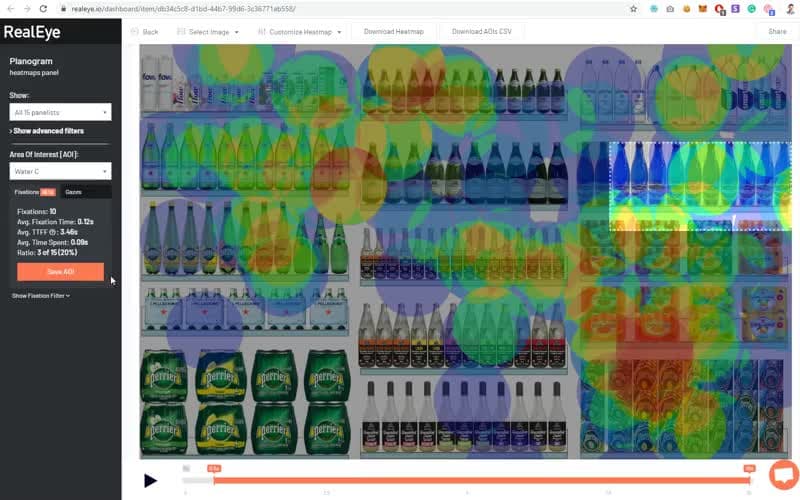

Planograms, visual representations of how products should be arranged on shelves or displays, play a crucial role in retail sales. In this article, we will discuss the importance of testing planograms, also known as shelf testing, to optimize sales and customer satisfaction.
Testing planograms provides valuable data to inform decision-making in product placement and shelf design, particularly in the following areas:
If you look at the process from the brand perspective there at least 3 reasons to do it:
You can read more about this type of reasearch in our case study:
https://www.realeye.io/blog/post/unravels-eye-tracking-study-on-heineken-beers
While shelf testing is practiced across various retail sectors, large retail chains with multiple locations are particularly active in this area as well as CPG or FMCG brands and producers. Common examples of companies that engage in planogram testing include:
The latter often as part of their market research studies, do also packaging testing.
The following are some of the key steps in the planogram testing process:
When eye tracking results, one should select their AOI (area of interest - ex. All faces of the new product package on the shelf) and analyze the following metrics:
When testing planograms, retailers can choose between using:
Webcam testing allows participants to shop and see planograms from home, which can increase the number of participants and save costs. What is more, the results may be obtained within hours or days.
In the in-lab testing approach, the results may be obtained in weeks or months, depending on the number of participants.
Ultimately, choosing between webcam and in-lab testing depends on the retailer's specific goals and budget constraints.
Testing planograms is a crucial practice for companies seeking to optimize sales, improve the customer experience, and optimize their supply chain. By gathering data and making informed decisions about product placement and shelf design, companies can gain a competitive edge in the market.
Want to check it for yourself? Try us : https://www.realeye.io/features/online-webcam-eyetracking/free-eye-tracker